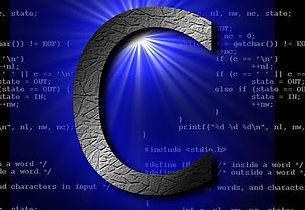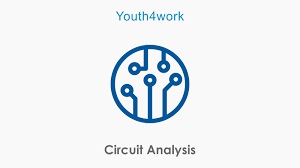Summary: The course is aimed at concepts of programming and software code organization. The special track is organized as a series of lectures, practicals and exercises using C programming languages and focusing on discussing how to write a program of moderate complexity by using C language.
Course Objective: The purpose of this course is to introduce to students the field of programming using C language. The students will be able to enhance their analyzing and problem-solving skills and use the same for writing programs in C.
Course outcomes:
CO1: Understanding a functional hierarchical code organization and the ability to define and manage data based on problem subject domain.
CO2: The student will be able to solve problems using C Programming language.
CO3: Ability to work with textual information, characters and strings.
CO4: Will be able to analyze and execute the most efficient and diversified technique for a given task.
CO5: The ability of random access to files or records and other file management functions in C.
C06: The student has the ability to handle possible errors during program execution

- Teacher: JERUSHA SHALINI VASKA
Course Description:
The course addresses the English language needs of the students at the undergraduate level and it also acknowledges their critical thinking skills. The text exposes the students to a range of contexts where the language is used to meet a variety of real life communication needs, to give and seek information, to express opinions, and to engage with practical, emotional, intellectual and creative aspects of language by integrating knowledge and skills. The book emphasizes on the use rather than the usage, on how the English language is used rather than how it should be used. Each chapter is organized in such a way that it creates a lot of involvement and encouragement to the learner.
The syllabus has been designed to develop linguistic and communicative competence of undergraduate students. It includes four genres- Short fiction, prose, poetry and drama. The major part of of each lesson is devoted to remedial language learning which includes pronunciation, grammar, vocabulary, spelling and pronunciation. The focus is on the skills of Reading, Writing, Listening and Speaking The teacher also asks questions to stimulate classroom discussion and based on these discussions the students will be made to write short paragraphs /essays, participate in group discussions as part of continuous assessment.
Course Outcomes
The students will be able to:
· Read short fiction, identify the various elements of a short story and write their own stories.
· Improve their pronunciation with the help of phonemic transcription.
· Figure out the etymological origins of English words by learning Greek and Latin roots, prefixes and suffixes, and learn to spell correctly.
· Distinguish the subtle differences in meaning and articulation in homonyms, homographs & homophones
· Learn different types of nouns, pronouns, auxiliary and main verbs.
· Be acquainted with the rules of punctuation concerning capitalization, commas, full stops, question marks and exclamation marks.
· Gain verbal competence in practicing how to introduce oneself in formal situation, describing one’s college and course of study, sustaining cordial conversations and leaving a voice mail.
· Read passages about the local culture, practices, history and personages of Telangana.
· Enhance their writing skills by learning how to draft paragraphs, sequencing sentences into coherent passages, describing something or someone in writing and writing a dialogue.
- Hone their soft skills and imbibe valuable life lessons to steer their course of life.
- Teacher: JYOTSNA A S
- Teacher: Dr. MAITHRY SHINDE
COURSE OBJECTIVES:
|
UNIT |
OBJECTIVES |
|
I |
|
|
II |
|
|
III |
1. To design various types of filters. 2. Describe the relationship between current and voltage in RC and RL circuit. 3. Attain knowledge about Parallel RC and RL Circuits. 4. Obtain values of impedance to know the accuracy of given circuit.
|
|
IV |
1. Become familiar with the frequency response of series resonant circuits and how to calculate the resonant frequency and cut off frequencies 2. Be familiar with the terms bandwidth and quality factor for a tuned network 3. Demonstrate and understanding of the impact of quality factor on the frequency response of a series or parallel resonant circuit 4. Know that the Q-factor is a measure of the selectivity of the band pass filter; 5. Recognise and sketch characteristics for a simple band pass filter; 6. Draw the circuit diagram for a band pass filter based on a parallel LC circuit; 7. Select and use the formula XL =2pfL 8. Recall that resonance occurs in a parallel LC network when XC = XL and hence calculate the resonant frequency 9. Measure peak to peak voltage and the time period from the CRO 10. Derive quantities such as Vrms and frequency from CRO.
|
COURSE OUTCOMES:
|
OUTCOMES |
|
CO1: The students will be able to identify &use various Electrical measuring Devices and explore them in designing basic electric circuits. CO2: The students will be aware of various electric safety rules used while working in electric circuits &equipment and identify requirements of Electric Machine for domest and industrial purpose CO3: The students will be able to apply Thevenin and Norton theorems to analyze and design for maximum power transfer and apply the concept of linearity and the associated technique of superposition to circuits and networks. CO4: The students will be able to understand waveforms, signals, transient, and steady-state responses of RLC circuits and develop the ability to apply circuit analysis to DC and AC circuits
CO5: The students will be able to find the response of RL, RC, RLC circuits
CO6: The students will be able to find the Time domain response from pole-zero plots and design the desired filters in the real time applications
CO7: The students will be able to trace practically the wave forms of voltage, frequency, time period, amplitude for square, triangular, sine inputs
CO8: The students will be able to draw various lissagous figures
|

- Teacher: SOWJANYA D